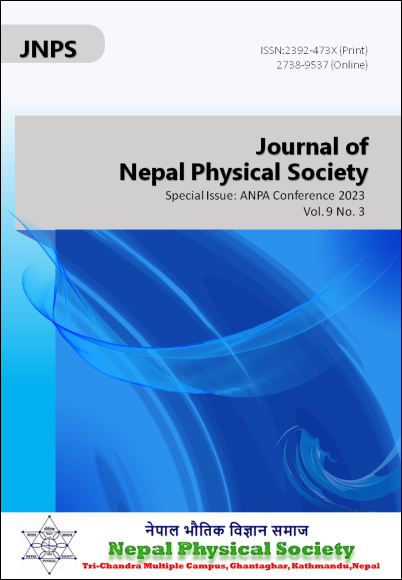Neighborhood-Level Air Pollution Monitoring and Analysis in Massachusetts
DOI:
https://doi.org/10.3126/jnphyssoc.v9i3.62455Keywords:
Environmental PhysicsAbstract
Air pollution is a significant environmental issue with far-reaching consequences for both human health and the planet. It arises from the emission of harmful pollutants, such as particulate matter, ozone, and nitrogen dioxide, into the atmosphere. These pollutants originate from various sources, including vehicles, industrial facilities, and power plants. The impacts of air pollution are wide-ranging, encompassing respiratory infections, cardiovascular disease, cancer, harm to ecosystems, and contributions to climate change. The study of air pollution is a multidisciplinary field that draws upon knowledge from physics, chemistry, biology, and engineering. Understanding the causes and effects of air pollution is crucial for developing effective strategies to mitigate its harmful effects. Physics, in particular, plays a vital role in this field by providing the tools and techniques required to measure and comprehend the behavior of pollutants. By examining air pollution, we gain insights into the factors driving this problem and can devise measures to reduce pollution levels. Moreover, this knowledge empowers individuals and societies to make informed decisions about minimizing exposure to pollutants and formulating policies and regulations that safeguard both human well-being and the environment. In our study conducted in the central Massachusetts region, we investigated the status of air pollution using a combination of Environmental Protection Agency (EPA) monitoring sites and hand-held sensors. While the EPA sites offer longterm monitoring data, hand-held devices’ flexible and affordable nature allowed us to explore air quality at the local neighborhood and street levels. By utilizing these tools, we assessed the spatial and temporal variations in air pollution within the city, aiding in the identification of localized hotspots. Such information is valuable for targeting specific areas requiring interventions and further understanding the dynamics of pollution distribution.
Downloads
Downloads
Published
How to Cite
Issue
Section
License
All right reserved. No part of this Journal may be reproduced in any form or by any electronic or mechanical means, including information storage and retrieval system, without permission in writing from the publisher, except by a reviewer who may quote brief passage in a review. The views and interpretation in this journal are those of author(s) and they are not attributable to the NPS.




